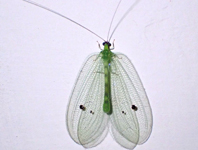Abstract
Life stages of Henosepilachna implicata (Mulsant), an economically important species of Epilachnini in India, are documented and illustrated. Mitochondrial DNA sequence data is provided for the first time for H. implicata with additional details on its host plants, distribution, and natural enemies. Its similarities and differences with other common pestiferous Henosepilachna spp. in India such as H. vigintioctopunctata (F.), H. septima (Dieke) and H. pusillanima (Mulsant) are discussed. Epilachna circularis Korschefsky, 1933 is found to be conspecific with H. implicata and is reduced to a junior synonym of the latter (new synonym). Notes are given on the distribution and natural enemies of some other species of Epilachnini of the Indian region.
References
Booth, R.G. & Pope, R.D. (1989) A review of the type material of Coccinellidae (Coleoptera) described by F.W. Pope and by E. Mulsant in the Hope Entomological Collections, Oxford. Entomologica Scandinavica, 20 (3), 343–370.
https://doi.org/10.1163/187631289X00366
Ceryngier, P., Roy, H.E. & Poland, R.L. (2012). Natural enemies of ladybird beetles. In: Hodek, I., van Emden, H.F. & Honěk, A. (Eds.), Ecology and Behaviour of the Ladybird Beetles (Coccinellidae), First Edition. Wiley-Blackwell, Oxford, pp. 376–443.
https://doi.org/10.1002/9781118223208.ch8
Chatterjee, N.C. & Bose, M. (1933) Entomological investigations on the spike disease of sandal (17). Coccinellidae (Col.). Supplementary data. Indian Forest Records, 19 (7), 1–10.
Crotch, G.R. (1874) A Revision of the Coleopterous Family Coccinellidae. E.W. Janson, London, 311 pp.
https://doi.org/10.5962/bhl.title.8975
Dieke, G.H. (1947) Lady beetles of the genus Epilachna (sens. lat.) in Asia, Europe, and Australia. Smithsonian Miscellaneous Collections, Washington, 106 (15), 1–183.
Hayat, M. (2018) Description of two new genera of Encyrtidae (Hymenoptera: Chalcidoidea) from India. Journal of Insect Systematics, 4 (2), 107–108.
Jadwiszczak, A. & Wegrzynowicz, P. (2003) World Coccinellidae Part 1: Epilachninae. Mantis, Olsztyn, 264 pp.
Kapur, A.P. (1959) Identity of the ladybeetle, Epilachna implicata Mulsant, from India (Coccinellidae: Coleoptera). Journal of the Bombay Natural History Society, 56 (3), 656–660.
Kerrich, G.J. (1973) A revision of the tropical and subtropical species of the eulophid genus Pediobius Walker (Hymenoptera: Chalcidoidea). Bulletin of the British Museum (Natural History), Entomology, 29 (3), 113–199.
Kimura, M. (1980). A simple method for estimating evolutionary rate of base substitutions through comparative studies of nucleotide sequences. Journal of Molecular Evolution, 16, 111–120.
https://doi.org/10.1007/BF01731581
Korschefsky, R. (1931) Coleopterorum Catalogus. Pars 118. Coccinellidae I. W. Junk, Berlin, 224 pp.
Korschefsky, R. (1933) Entomological investigations on the spike disease of sandal (16). Coccinellidae (Col.). Indian Forest Records, 19 (6), 1–9.
Kumar, S., Stecher, G., Li, M., Knyaz, C. & Tamura, K. (2018) MEGA X: Molecular Evolutionary Genetics Analysis across computing platforms. Molecular Biology and Evolution, 35, 1547–1549.
https://doi.org/10.1093/molbev/msy096
Li, C.S. & Cook, E.F. (1961) The Epilachninae of Taiwan (Col.: Coccinellidae). Pacific Insects, 3, 31–91.
Matsubayashi, K.W., Kahono, S., Hartini, S., Fujiyama, N. & Katakura, H. (2016) Redescription of the phytophagous ladybird beetle Henosepilachna diekei and descriptions of two related species from Indonesia (Coccinellidae, Coccinellinae, Epilachnini). Insecta Matsumurana, New Series, 72, 1–16.
Mulsant, E. (1850) Species des Coléoptères trimères sécuripalpes. Annales des Sciences Physiques et Naturelles, d’Agriculture et d’Industrie, Lyon, Series 2, 2, 1–1104.
https://doi.org/10.5962/bhl.title.8953
Nei, M. & Kumar, S. (2000). Molecular Evolution and Phylogenetics. Oxford University Press, New York, 333 pp.
Noyes, J.S. (2019) Universal Chalcidoidea Database. World Wide Web electronic publication. Available from: http://www.nhm.ac.uk/chalcidoids (accessed 9 February 21)
Poorani, J. (2004) An annotated checklist of the Coccinellidae (Coleoptera) of the Indian Subcontinent. Available from: https://www.angelfire.com/bug2/j_poorani/checklist.pdf (accessed 9 February 21)
Schaefer, P.W. (1983) Natural enemies and host plants of species in the Epilachninae (Coleoptera: Coccinellidae): A World List. Bulletin 445. Agricultural Experiment Station, University of Delaware, Newark, Delaware, 42 pp.
Seago, A.E., Giorgi, J.A., Li, J.H. & Ślipiński, A. (2011) Phylogeny, classification and evolution of ladybird beetles (Coleoptera: Coccinellidae) based on simultaneous analysis of molecular and morphological data. Molecular Phylogenetics and Evolution, 60, 137–151.
https://doi.org/10.1016/j.ympev.2011.03.015
Ślipiński, A. (2007) Australian ladybird beetles (Coleoptera:Coccinellidae), their biology and classification. Australian Biological Resources Study, Canberra, 286 pp.
Szawaryn, K. & Tomaszewska, W. (2013) Two new genera of Epilachnini Mulsant from New Guinea and Aru Islands (Coleoptera: Coccinellidae). Journal of Natural History, 47, 2427–2457.
https://doi.org/10.1080/00222933.2012.763067
Tomaszewska, W. & Szawaryn, K. (2016) Epilachnini (Coleoptera: Coccinellidae)—A revision of the world genera. Journal of Insect Science, 16 (1), 1–91.
https://doi.org/10.1093/jisesa/iew082
Weise, J. (1908) Coleopteren aus Ostindien. Stettiner Entomologische Zeitung, 69, 213–230.


